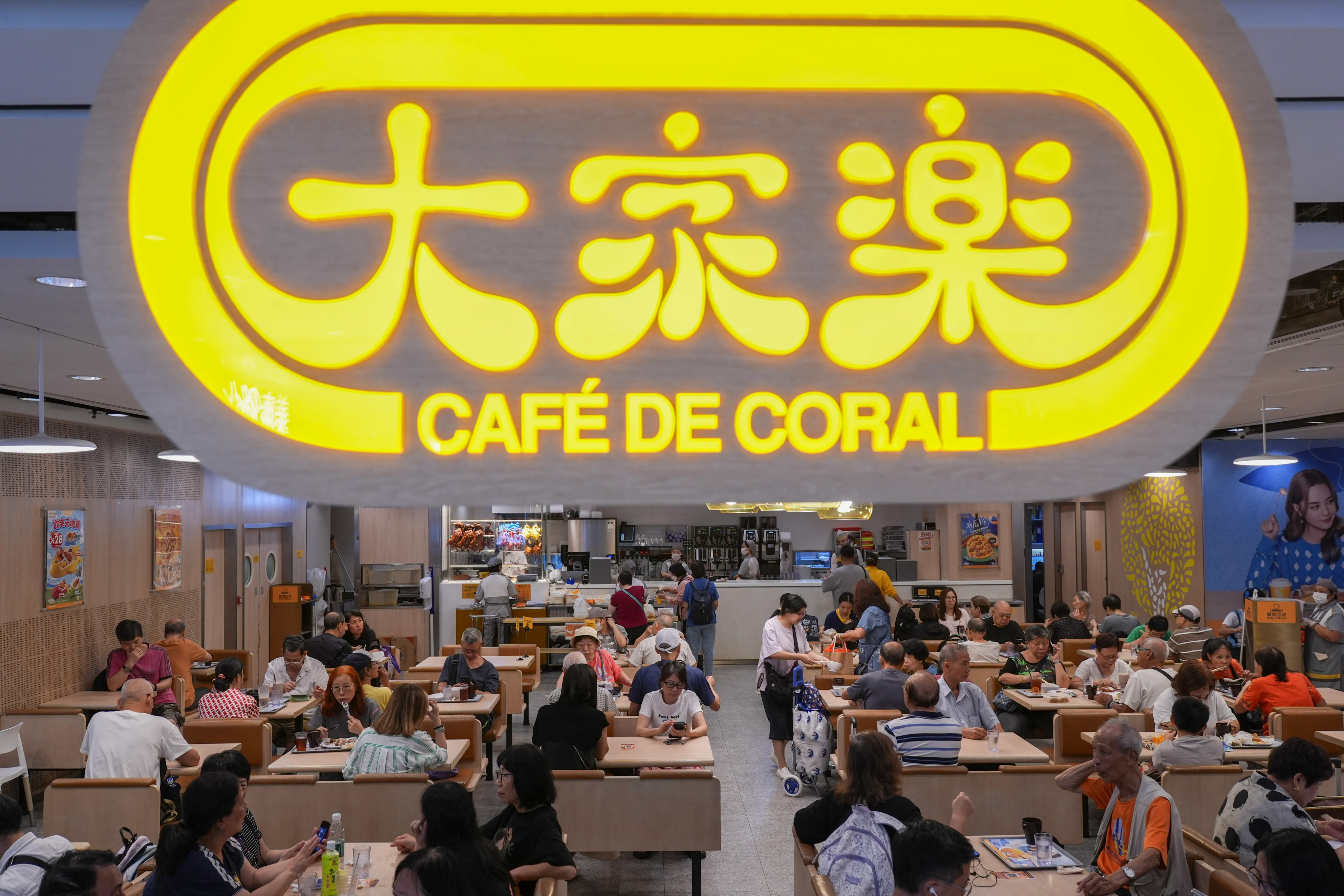By Joshua Kwok
Two of Hong Kong’s largest fast-food chains, Cafe de Coral and Fairwood, both suffered a near 30 per cent drop in profits last year, with experts attributing their struggles during the economic downturn to ageing diners and intense competition from delivery platforms.
The two companies were considered resilient players during previous downturns caused by global financial meltdowns in 1997 and 2008 and two health crises – the 2003 outbreak of severe acute respiratory syndrome (Sars) and the Covid-19 pandemic in 2020.
But Cafe de Coral, founded in 1968, and Fairwood, established in 1972, are arguably facing their biggest challenge in more than half a century.
“Fairwood and Cafe de Coral are ‘inferior goods’, which means they perform better when the economy is bad, and even outperformed some mid- to high-tier restaurants during previous recessions,” said Billy Mak Sui-choi, an associate professor at Baptist University’s department of accountancy, economics and finance.
“Now, the competitive market, the ageing population, shifts in consumer habits, and these chains not going onto delivery platforms all contribute to their decreasing profits.”
In the last financial year, Cafe de Coral Holdings’ net profit dropped by 29.6 per cent from 2023-24 to HK$233 million. Fairwood Holdings’ net profit fell by 28.8 per cent to HK$36 million.
Cafe de Coral runs 174 outlets and Fairwood 147 across the city, and 185 and 19 respectively across the border in mainland China.
In recent years, the city’s restaurant sector has been hit hard by shifts in mainland visitors’ tastes and the growing trend of locals crossing the border for leisure, leading to a string of recent shutdowns.
On a weekday in late June, the Post spotted an old couple in a queue of elderly customers waiting several minutes until the clock ticked past 2pm to order a tea set at a Cafe de Coral outlet in Causeway Bay.
The decision by Mr and Mrs Che, 87 and 79, regulars who visit the branch twice a week, exemplifies the frugal spending habits of the elderly even at one of the city’s most economical establishments.
“We usually have breakfast and dinner at home, and only eat out for lunch. We came for the cheaper prices of around HK$40 [US$5] per person during teatime here, compared with HK$70 per person in teahouses for some dim sum and tea,” Mr Che said, noting that the chain’s recent introduction of a two-dish rice item was the cheapest thing on the menu, with an option to pay an additional HK$10 for a serving of rice and soup or dessert.
“It’s not affordable to eat out all day if you think about it, especially when the economy is slow.”
The couple spend a little bit more during the weekend when they are with their family, but generally tend to seek out the best value-for-money food deals.
“It’s really cheap on the mainland and the quality is good there. For HK$300 we can enjoy quality seafood, roasted squab and many other dishes,” Mrs Che said.
“In Hong Kong, you can only order three plates of simple stir-fried dishes for the same price at a restaurant. You can’t compete with the prices on the mainland.”
Ryan Lam Chun-wang, head of research at Shanghai Commercial Bank, noted that the two major chains had lost market share to competitors.
“The fast-food chains are no longer the only options for quick and affordable dining. With their limited variety of dishes, they can neither attract quick diners nor families looking for quality meals,” he said.
Mak, the Baptist University economist, also said that as the economy slowed, retirees who relied on their pensions tended to spend conservatively even if they had the spending power.
“The cheaper teatime offers can attract price-sensitive elderly to help maintain revenue, but they cannot score a huge profit for the chains,” he said.
Mak said consumers’ habits had changed after the pandemic, with most wanting to have dinner at home after work.
“We see microwave meals at convenience stores and supermarkets, frozen meat stores, two-dish rice restaurants, and many other options becoming more popular as the demand for them rose after the pandemic,” he said.
If the fast-food industry wanted to thrive, it would have to adapt, he said.
“Joining delivery platforms to cater to younger consumers, promoting elderly-oriented dishes, assessing the profitability of some branches, or diversifying their business – these could all help drive profit and get them out of the slump.”
In response to Post inquiries, Cafe de Coral said it had “weathered challenging periods in the past and emerged stronger each time”. It remained confident in its business structure and mass appeal, and pointed to the support of Greater Bay Area outlets, which accounted for 18 per cent of its revenue.
The company recently expanded its offerings by launching a new selection of cold drinks, tea sets themed on intangible cultural heritage such as pineapple buns and egg tarts and two-dish rice.
Fairwood’s executive director and vice-chairman, Francis Lo Fai-shing, said that the current downturn was protracted and presented a more serious challenge compared with previous slumps.
But he said that as rents were currently falling, the company was renegotiating them and looking to “seize expansion opportunities”.
“I am confident that Fairwood, being in both Hong Kong and the Greater Bay Area … is well positioned to actually come out of this challenge a winner,” he said.
